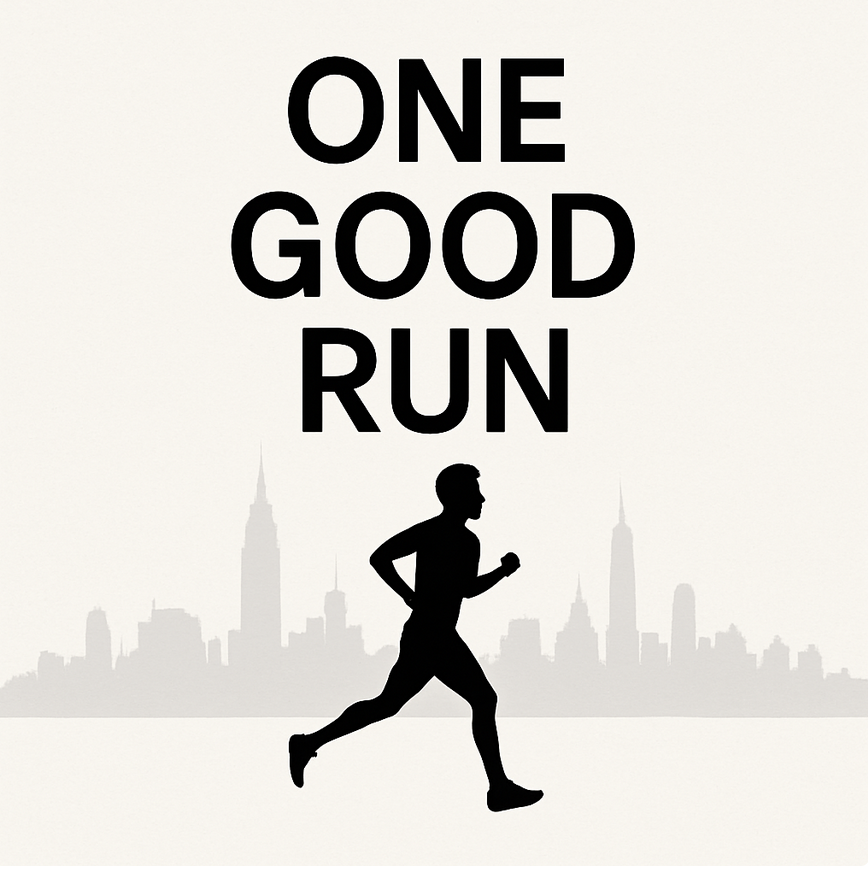Ten years ago, I stood on the Verrazzano Bridge in New York City, about to run my first marathon.
I had NO idea how much that experience would change how I think about the human body.
A decade later, running has become more than training or therapy.
It’s been my teacher.
It’s taught me about physiology, resilience, patience, and trust — lessons I could never fully grasped in textbooks or clinic rooms.
Here are ten things I’ve learnt from marathon training that go far beyond pace, finish times, or medals.
🏃 1. Endurance Is the Foundation for Strength
I used to think strength was the key to everything.
If I could just get stronger, everything else would fall into place.
But running taught me the opposite — endurance builds strength.
When your aerobic base is weak, even small loads feel heavy. When it’s strong, recovery speeds up, tissues stay oxygenated, and your whole system adapts better.
Endurance is the foundation of every adaptive system.
⚖️ 2. The Power of Adaptation
For years, I viewed pain through a “wear and tear” lens — that something was breaking down.
Tim Gabbett’s research changed that for me.
It’s not load itself that causes injury — it’s spikes in load beyond what the body’s ready for.
Pain is often feedback from a system not yet adapted, not a sign of fragility.
Through marathon training, I learned to see pain as part of the process.
The body’s constantly negotiating with stress — and it always adapts when the dose is right sand recovery is good.
💊 3. NSAIDs and the Body’s Hidden Intelligence
I haven’t taken an anti-inflammatory in over 10 years.
I learned that inflammation isn’t the enemy; it’s the signal that healing and adaptation are happening.
NSAIDs can mask that process, dulling both pain and progress.
By learning to listen instead of silence my body, I discovered how much healing power it already holds.
Running taught me to work with pain, not mute it.
🧠 4. The Power of Interoception
Running isn’t just physical — it’s deeply physiological.
It’s one of the best forms of interoception training there is.
Pain isn’t just tissue damage….it’s chemistry (pH, inflammation, fatigue metabolites) mixed with context (beliefs, emotions, environment).
Neuroscientist Bud Craig’s research helped me see pain as a homeostatic signal — the body’s way of saying, “Something’s out of balance.”
When I stopped fearing pain and started feeling, everything changed.
Running tuned me into the subtleties — how fatigue feels different from threat, how effort transforms with breath, how awareness itself is therapeutic.
🦵 5. The Paradox of Knee Pain
Almost every new runner feels some form of knee pain…I did too.
It’s frustrating — especially when everyone warns that running “wrecks your knees.”
But as I adapted, something flipped.
The stronger and more consistent I became, the less my knees hurt.
Over time, running didn’t cause pain — it protected me from it.
Research now supports this: experienced runners actually have a lower risk of knee osteoarthritis than non-runners.
It’s one of the great paradoxes — movement that seems to hurt at first often becomes the very thing that heals.
🦶 6. The Calf: The Real Shock Absorber, Not the Cartilage
The knee cartilage is often thought to be the shock absorber of force — but now I know it’s the calf that is the real unsung hero.
The calf muscle and Achilles tendon act as dynamic springs, absorbing and reusing force with every step.
When they’re weak or fatigued, that energy shifts upward — straight into the knee.
Once I learned to build calf endurance (especially hilly easy paced long runs), everything changed.
It’s elegant biology — not engineering.
⏱ 7. Pacing: Staying Relaxed Under Stress
Pacing is the ultimate lesson in self-awareness.
When I force effort, my body fights back — heart rate spikes, form collapses, fatigue sets in early.
But when I relax, breathe, and find rhythm, everything flows.
Good pacing isn’t about running slow or fast — it’s about learning to stay calm inside effort.
That’s not just physical endurance; that’s movement mastery.
🧍♂️ 8. Don’t Get Stuck in Perfect Movement
For years, I chased perfect posture and activation.
I lived by the rule: “Move well, THEN move often.”
But somewhere along the way, that became a trap.
I spent so much time correcting that I forgot to adapt.
Marathon training reminded me that progress beats perfection.
You don’t need perfect movement — you need a body that can tolerate imperfection and still function.
That’s what resilience really means.
⚡️ 9. The Power of Dry Needling
Dry needling changed how I understood pain.
When a deep, stubborn ache suddenly released, I realised — this wasn’t structural damage.
It was physiology.
Circulation, pH, muscle tone, and local chemistry can all shift pain in seconds.
Seeing pain change that fast taught me something vital:
If pain can change quickly, it’s not fixed — and neither are we.
✅ 10. Acceptance and Control
I used to believe that if I just worked harder, I could fix everything — old injuries, genetics, structural degeneration.
Now I know that some things we simply can’t change.
But that’s not defeat…it’s direction.
What matters is where we place our effort on the things we CAN control — into functional capacity, load management, recovery, mindset, nutrition, and the stress–recovery rhythm.
Acceptance isn’t giving up…it’s turning your energy toward what can adapt.
💬 Closing Thoughts
Running taught me more about physiology, psychology, and healing than any textbook ever could.
It’s taught me patience, rhythm, and respect for the body’s complexity — and its capacity for change.
Pain isn’t failure; it’s feedback.
The body isn’t fragile; it’s antifragile — waiting for rhythm, recovery, and respect.
Ten years on, I still run to remind myself of that truth.





